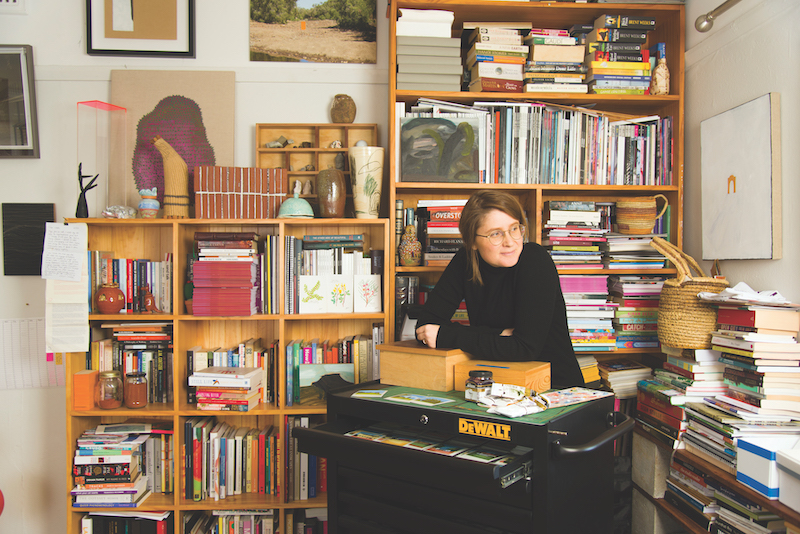The works of Hayley Megan French reimagine the art of documentation, “engaging both critically and poetically with how we live and how these experiences are shaped by the environments in which we live,” says the artist. Based in Western Sydney (Dharug Country), French explores her own memories embedded in places, moving between representational vignettes to larger abstract pieces.
A typical studio day for French involves going for walks, taking photos, working over polaroids, layering colours and shapes on larger canvases, and reading and writing. “I feel most creative when I am sitting in the passenger seat on a road trip, taking in my surrounds,” she says, “in quieter, more still moments.” Her works become an enmeshment of observing and experiencing, each moment addressed with a conscious effort to revisit and understand ideas of belonging through the lens of suburbia.
Over the last four years she has developed bodies of work such as The Pipeline, Walking Paths and Suburban Line Paintings that document the places she has lived, addressing ideas of home and the ever presence of coloniality.
Her smaller works explore intimate dwellings, suburbia, homes, and yards, while her larger abstract pieces transfigure into bodily mappings that evolve from the pictorial to the intangible, from a place seen to a place felt. Building on one another, the works explore the transitory nature of memories from being distinct moments to sensory revisions. “I love the capacity of painting to create an intimacy and slowness that can bring different ideas and experiences into conversation,” she says.
French recalls her move to the Western Sydney suburb of Old Guilford in 2018, where she began documenting her neighbourhood with a polaroid camera that would later inform The Pipeline series. The polaroids are painted over, using acrylic paint from a 4-colour palette. Swathes of terracotta red, a chalky yellow accented by a hum of heat, and muddied greens relish in a dry hazed nostalgia.
“The colour palette was chosen from the light blues and greens of post-war fibro housing prominent in the area, the red brick of the Arabic Gospel church next door and the yellowing of the grass in the Western Sydney heat,” she says.
The colours become demographic keys that signal a collective memory; a colonial commentary that aims to critically assess local histories. In 2019 French undertook residencies in Kununurra, Western Australia on Miriwoong Country and on the land of the Giabal and Jarowair people in Toowoomba, Queensland where she further developed The Pipeline archive, fine-tuning her palette.
The Walking Paths document routes that the artist has walked, “embedded with memories and associations that remind me where and who I am,” she says. Roads, intersections, and footpaths seep through the whitewash veil clearly defined by a travelling crimson marking, what she likens to a “suburban desire line”. Sepia strokes mimic movement with such dynamism, as if they are autonomously navigating the canvas. The series becomes a topography of self; a meditative mapping.
French’s bodies of work are part of a much larger project. They are “engaging in a conversation about what suburbia means in the Australian imagination,” she says. “At the centre of this conversation is home.”
The artist was represented by Sydney commercial gallery Galerie pompom from 2018, before the gallery’s closure in 2022. French presents a solo show Within Walking Distance at The Condensery, Somerset Regional Gallery in Toogoolawah (the latest suburb to feature in her series The Pipeline) from 10 September to 20 November which will see a staggering 100 of her paintings exhibited.
Featured image: Artist Hayley Megan French. Photo: Garry Trinh. Courtesy: the artist.

